Khartoum in Ruins: Scenes from Sudan's Capital After Two Years of War
Urban apocalypse redefines Sudan's political and social fabric
Burned and damaged buildings in Khartoum, filmed by a soldier in March 2025.
The civic and commercial heart of Sudan’s capital is in ruins, emblematic of a country undergoing a process of systemic state collapse. Ruled by warring military factions, Sudan no longer has a functioning parliament, healthcare system, education system, markets, or judiciary across vast swaths of the country.
Rather than investing in public services like schools and hospitals, the warring parties have poured their money and manpower into warfare—buying weapons, drones, and combat vehicles, and sending droves of young men to their deaths on the battlefield.
In central Khartoum, an intense phase of urban combat has ended. The Sudanese Armed Forces (SAF) has taken control of most of the central city, as well as neighboring Khartoum Bahri and East Nile, relegating the Rapid Support Forces (RSF) to eastern and southern areas of Khartoum and a few outlying areas of Omdurman. This victory, the culmination of a six-month offensive, is widely recognized as a major milestone in the conflict.
Yet, it does not bring the country meaningfully closer to peace, as the RSF and other armed groups continue to control large parts of the country, particularly in Darfur and Kordofan, amid deteriorating economic and humanitarian conditions.
The following statistics illustrate the severity of the situation:
Food Supply Threatened: National cereal production has dropped more than 40% as farms are untended or underproducing in many areas.
Severe Economic Damage: Many markets in Sudan have been pillaged or deliberately bombed, factories destroyed, oilfields shut down, and pipelines ruptured. Millions of workers in both the private and public sectors have lost their jobs or gone without pay since the war broke out in April 2023.
Runaway Inflation: The Sudanese pound has collapsed, with prices for basic goods skyrocketing. Inflation has eroded purchasing power, making food and essentials unaffordable for millions.
Millions Malnourished: The UN estimates that half the population (24.6 million people) face acute food insecurity, including 3.2 million children projected to suffer from acute malnutrition this year.
Famine in Hard-Hit Areas: While much of the country suffers economic hardship, households in certain areas face dire shortages of food. Severe malnutrition caused the IPC Famine Review Committee to declare ongoing famine in five places, with another five locations expected to be declared by May.
Years Without School: 17 million children are out of school, with schools fully shut down in several states and operating with minimal resources in others.
Disease Hits Vulnerable Populations: Cholera and other diseases are spreading, killing war-displaced people living in makeshift settlements.
Largest Mass Displacement in World: 3.9 million people have fled Sudan to neighboring countries, while 11.3 million people are displaced within Sudan, meaning nearly a third of the total national population is displaced by conflict.
This ongoing economic and humanitarian disaster is partly rooted in the destruction of the capital, which once housed vital commercial, governmental, and international institutions. These institutions managed the healthcare and education systems, distributed medicines, fertilizers, and seeds, manufactured foodstuffs, financed trade, oversaw electricity and water supply, managed telecommunications and transportation, and coordinated humanitarian aid and development assistance.
Destroyed Office Towers, Al-Mogran
The video above, and the one below, show several damaged or burnt-out landmarks in Khartoum’s Al-Mogran district, including the the Sahel and Sahara Bank, the Central Bank, the Al-Shaheed Mosque, the Coral Hotel, and the Zain Telecom Tower.
During the Battle of Khartoum, Al-Mogran was one of the most fiercely contested areas. Al-Mogran means “confluence,” referring to the place where the Blue Nile and White Nile rivers meet. This picturesque locale turned into a scene of raging conflict in September 2024, when the Sudanese army captured two bridges and the westernmost tip of the area in a surprise attack, triggering heavy fighting for nearly six months along a mostly static frontline, as the RSF resisted fiercely.
Fighting in Al-Mogran ended last week, when SAF finally gained a decisive advantage and broke through. After that, jubilant soldiers filmed videos of the captured areas, sharing them on social media. Most videos in this article were filmed by SAF soldiers.
View from Inside Burned Hotel
Illustrating the total devastation of many buildings in Khartoum, this video was filmed inside Coral Hotel, Al-Mogran, while fighting was still ongoing in October 2024.
Thousands of vehicles destroyed and looted
During the RSF occupation of Khartoum, they transported numerous vehicles westward to Darfur, from where they could be moved to Chad or Libya for resale. They also appropriated civilian vehicles for combat and dismantled others for spare parts. Many of these stripped cars now line the roads in Hajj Yusuf, East Nile Locality.
Nile Street
One of the most static frontlines in the conflict since 2023 was located in downtown Khartoum, including the area seen in this video, between the Mek Nimr Bridge and the University of Khartoum. RSF besieged SAF forces in this area for nearly two years, until a SAF breakthrough via Khartoum Bahri in January turned the tide.
St. Matthews Cathedral
Built in 1908, the church suffered damage to both its interior and exterior but it appears to be structurally sound. Some nearby buildings were burnt.
Presidential Palace in Ruins
The Sudanese military recaptured the New Republican Palace on Friday, March 21, 2025, after nearly two years of RSF control. The palace served as the official residence of President Omar al-Bashir and his successor General Abdel Fattah Al-Burhan. Though heavily damaged, the palace still has symbolic significance, and the RSF commander-in-chief had ordered his troops not to retreat from it.
Etienne Square
Trashed but not destroyed, Etienne Square used to be a gathering spot for writers, artists, intellectuals and politicians. It was known for its monthly open-air book market, called Mafroush, which was popular due to the closure of other bookstores.
Want to learn more and keep up with the latest developments in Sudan? Sign up for a free or paid subscription to receive 2-4 weekly emails containing maps, videos, fact-based reporting, and incisive insights from an independent perspective.
Khartoum University Turned Into Barracks
The Sudanese military used the University of Khartoum as a base during a long siege of an enclave of North Khartoum, referred to as “General Command.” The academic buildings were ransacked, damaged, and unmaintained, though they are still standing.
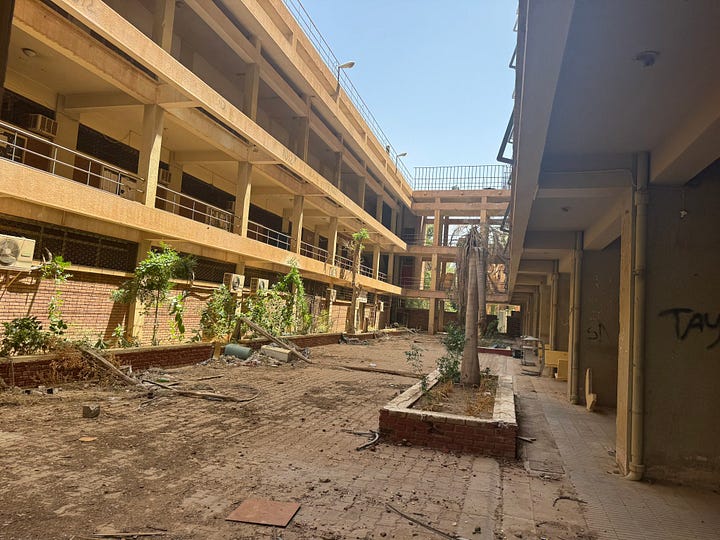
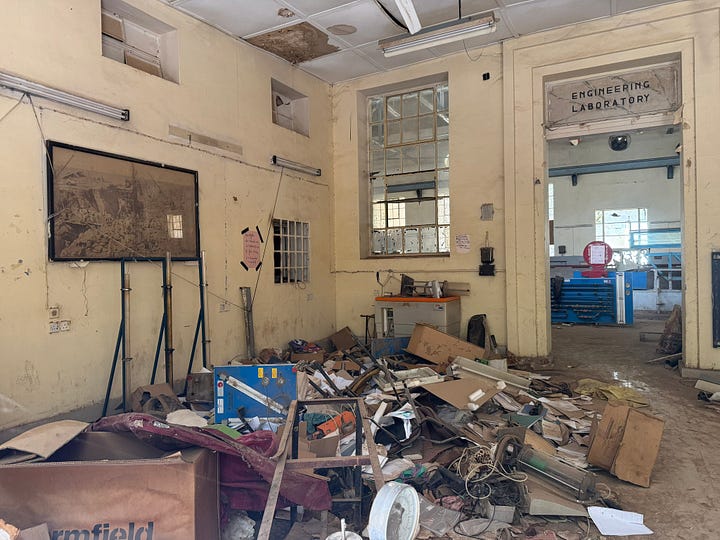
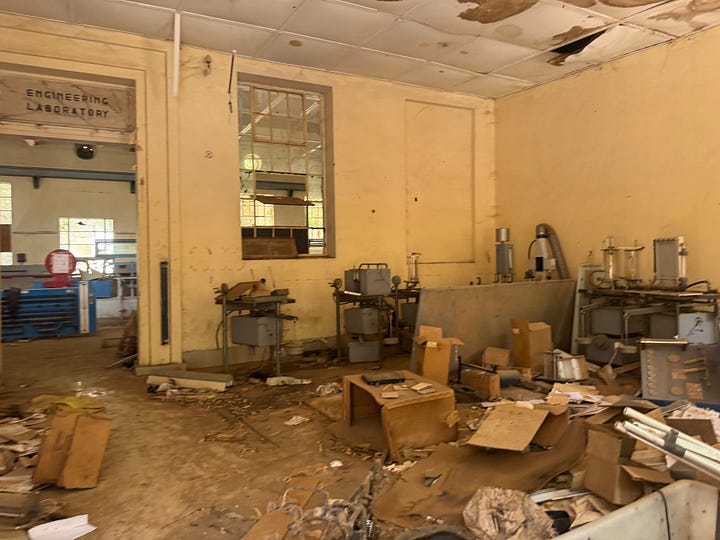
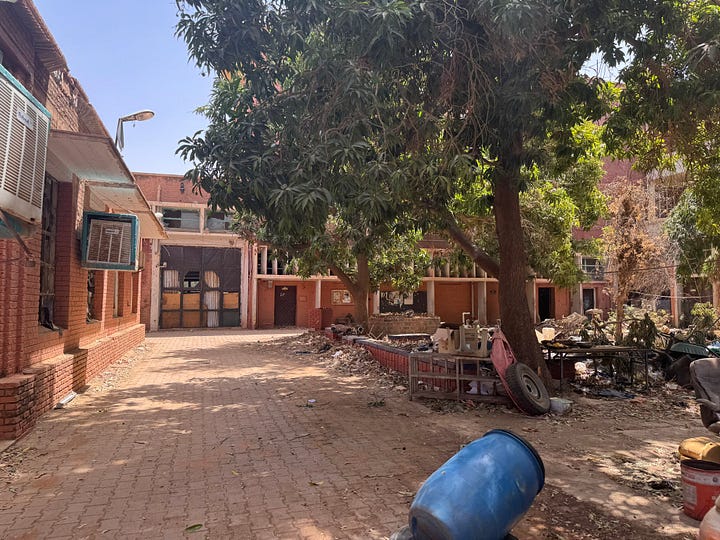
Oasis Mall and Afra Mall Damaged
The video below was filmed inside Oasis (Al-Waha) Mall, which was occupied by the RSF for most of the war. It was ransacked and suffered structural damage.
A similar shopping complex, Afra Mall, located south of the airport, suffered damage from shelling or airstrikes early in the war.
Other buildings near Oasis Mall were also destroyed or damaged. This video was filmed one block east of Oasis Mall (geolocated to 15.604372, 32.526091):
East Nile Hospital Bombed and Abandoned
East Nile Hospital suffered damage both during recent fighting and early in the war (in May 2023), when the Sudanese Air Force bombed it after rumors circulated that RSF troops were being treated there, killing five civilians. The hospital is among many in the capital area that shut down, leaving the population without healthcare services.

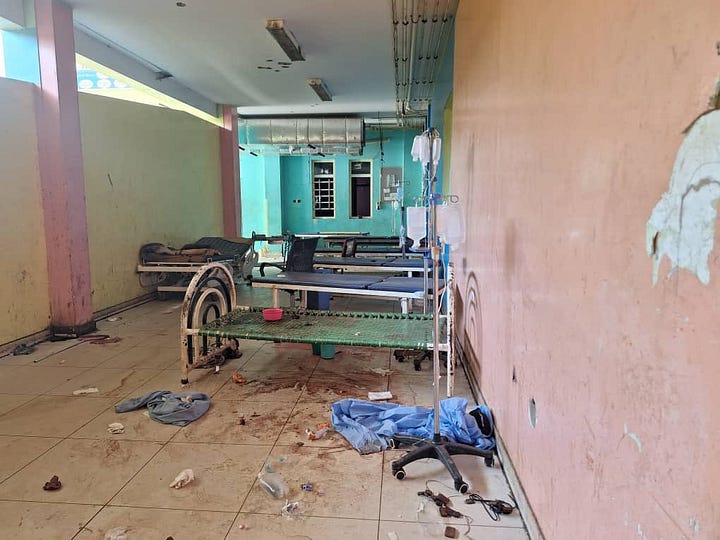


‘Gaddafi’s Egg’ Damaged
The luxury Corinthia Hotel, nicknamed “Gaddafi’s Egg,” was completed in 2008 and had a prominent place in the Khartoum skyline. The building is damaged but does not appear to be as gutted as other high-rises like the GNPOC Tower and Petrodar Tower.
This video, which shows damage to the exterior of Corinthia Hotel, was filmed from underneath the Tuti Bridge, where the RSF had an outpost:
Fire Damage at Friendship Hall
Friendship Hall, a prominent conference center built with Chinese assistance in the 1970s, suffered damage from both munitions impacts and fire. The SAF captured it on March 22, 2025, after the RSF had controlled it for most of the war. Over the decades, the hall has played an important civic role, hosting major political and diplomatic events, peace conferences, significant state functions, and cultural gatherings.
War Debris Near Acropole Hotel
Abandoned RSF combat vehicles, including an armored car, were found in shops opposite the Acropole Hotel, which was operated by a Greek family since before Sudan’s independence until the outbreak of the new war (1952 to 2023). The hotel was known as a haven for journalists, humanitarians, tourists, and archeologists.
Company and Government Offices in Flames
The Greater Nile Petroleum Operating Company Tower and the nearby Petrodar Tower, which were built during an oil boom and both completed in 2010, burned in September 2023 and September 2024, respectively. The buildings were controlled by the RSF at the time, suggesting they may have been hit by SAF munitions or burned accidentally. Both buildings appear totally destroyed and will need to be torn down.
Other office buildings that went up in flames include the Sudan Standards and Metrology Department, the Central Bureau of Statistics, the Bank of Omdurman (Khartoum Main Branch), the Sudanese-Jordanian bank, the Ministry of Justice, and the Sudan News Agency, among others.
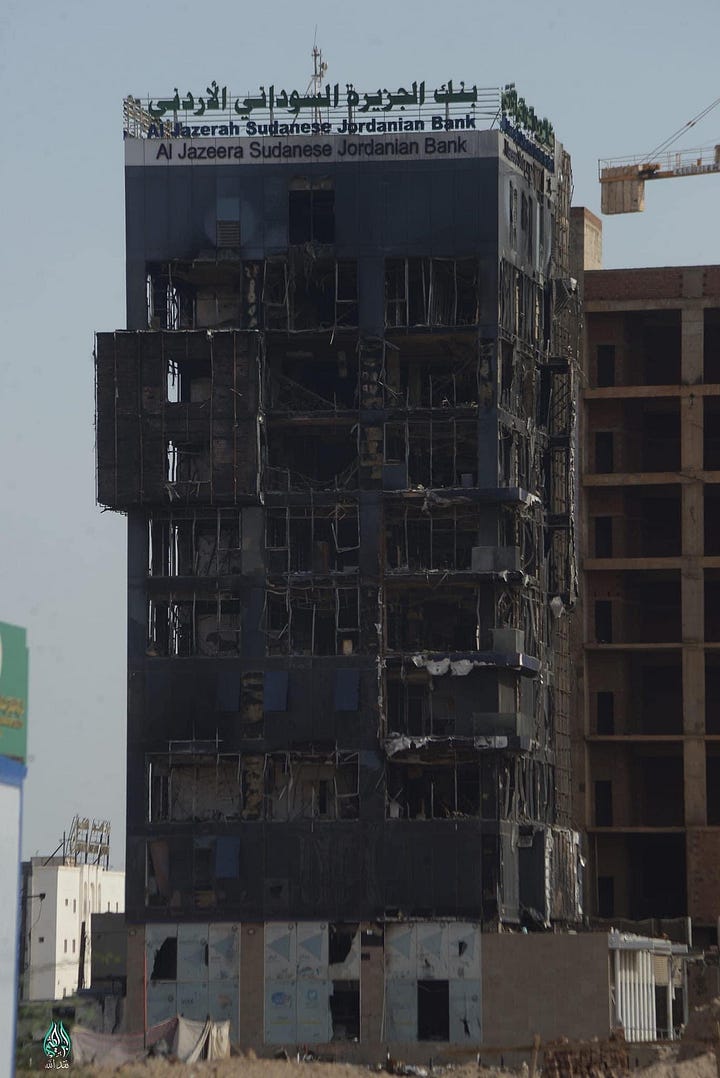
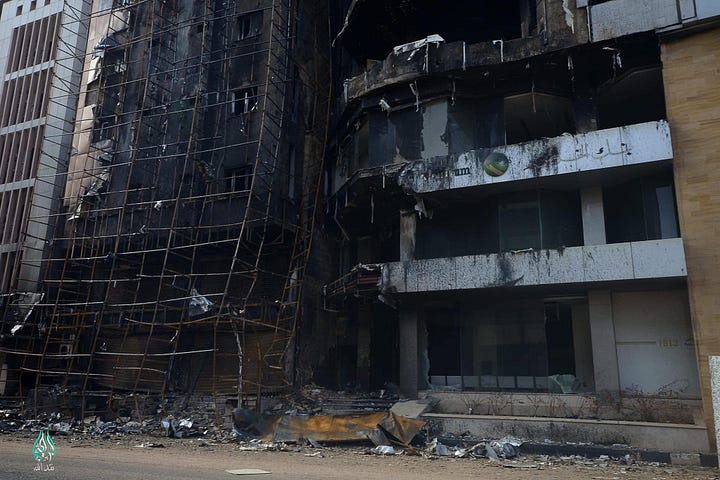
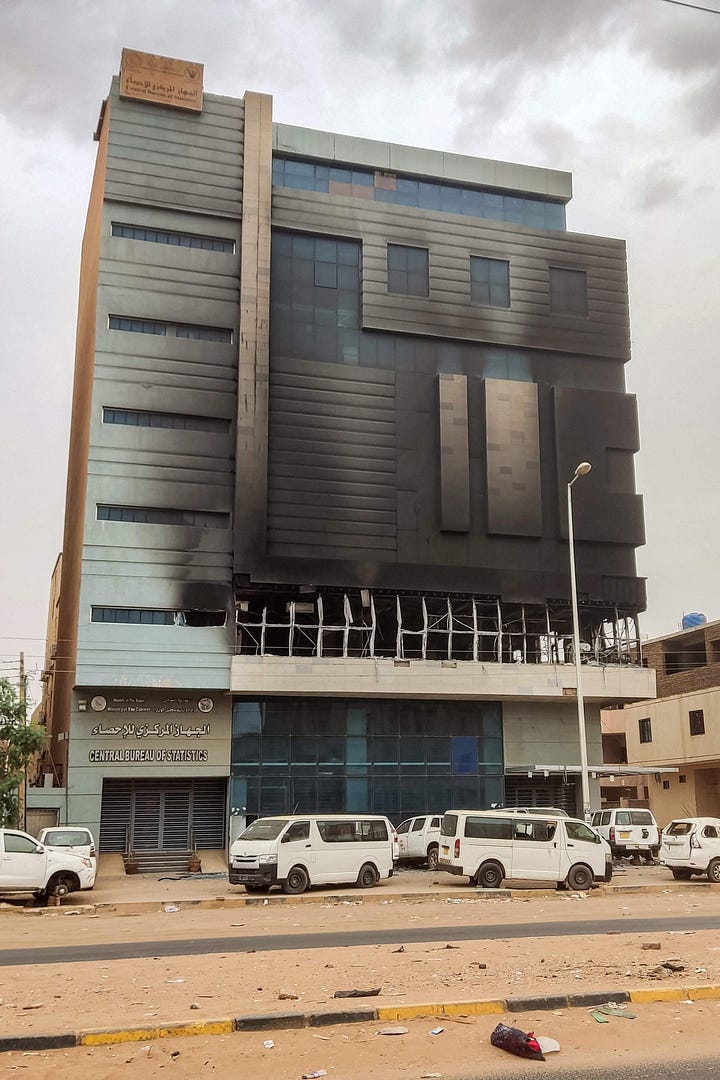
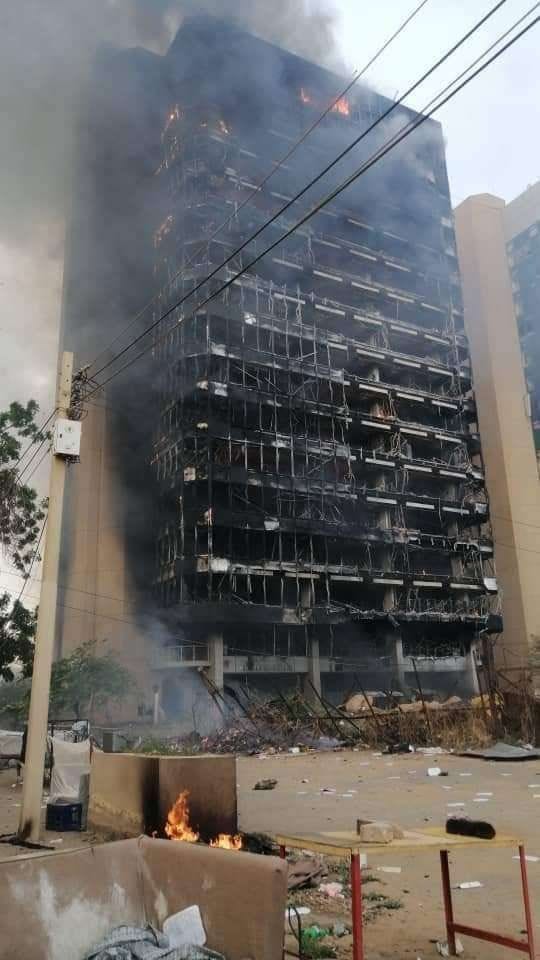
Destroyed Shops and Homes
While government institutions and large companies suffered losses, many small businesses and families also lost properties. The first video below shows a shopping center, Abu Al Fadl Plaza (15.6214, 32.5318), which was destroyed by an apparent SAF airstrike early in the war. The second video shows destroyed residences in the Lamab neighborhood in southwestern Khartoum, which SAF heavily bombed and shelled to ward off RSF attacks on the besieged Armored Corps, located near there.
No peace prospects on horizon
Despite the conflict’s immense toll, Sudan’s warring parties have never held direct negotiations during two years of war, except for a few abortive efforts in the first month. Instead, they preferred to resolve their differences on the battlefield.
The situation has echoes of the 1990s, when a clique of Islamist military officers seized power by force, repressed all dissent, allied with Al-Qaeda and Iran, and plunged the country into a series of devastating conflicts. That regime fell amid mass protests in 2019, ending a 30-year reign and initiating a brief period of civilian rule.
“There will be no negotiations, no truce, even if the war lasts 100 years.”
However, officers of the same regime retook power in 2021. They are again vowing to fight for years more, if necessary to win victory. Lieutenant General Yasser al-Atta, a top member of Sudan’s ruling military council, has said, “There will be no negotiations, no truce, even if the war lasts 100 years.” Furthermore, he suggested that the military would retain power for another 20 years after the war ends.
As the conflict in Sudan drags on, both warring parties face risks of fragmentation. Divisions have already emerged within the ranks of the RSF, and the military government in Port Sudan has limited control over some of its security forces, including the Darfur Joint Force and the Al-Baraa Bin Malik Brigade, a paramilitary linked with the Islamist Movement and the former ruling party, the NCP.
Furthermore, the conflict in Sudan risks destabilizing other parts of the region, including Chad, the Central African Republic, and South Sudan, which is suffering its own escalating security and political crisis. On Sunday, Lt-Gen. Al-Atta threatened attacks against South Sudan and Chad, calling them “legitimate military targets.”
Last week also witnessed limited clashes between the RSF and the SPLM-IO, a South Sudanese armed group, inside South Sudanese territory near the international border. The fighting is a sign that the conflicts in Sudan and South Sudan risk becoming intertwined, reigniting old patterns of conflict and ending a fragile peace between the two countries that has lasted, more or less, since 2012.
In some respects, Sudan’s current civil war appears worse than the Second Sudanese Civil War, Africa’s longest modern conflict (1983 to 2005), and the related but distinct Darfur War that followed (2003 to 2019). Those conflicts were fought mostly in peripheral rural areas, limiting their impact on the central state apparatus and urban elites. By contrast, this war has torn through the country’s core, displacing and radicalizing an entire generation. With the state crumbling and weapons flooding the country, armed factions are proliferating and cementing their power in regional fiefdoms. Sudan is edging closer to total collapse and a future shaped by warlords rather than government.
How You Can Help
Sudan War Monitor is an in-depth resource for tracking the world’s largest humanitarian crisis and the conflict that has caused it. We’ve been able to sustain and grow this initiative thanks to a global network of supporters. You can help by upgrading to a paid subscription, which gives you access to subscriber-only extras, as well as our full archive of reporting and analysis.
Other ways you can help:
📢 Forward our newsletters to colleagues and friends.
📲 Share our work on social media.
🔗 Link to Sudan War Monitor from your website or blog.
🎁 Purchase a gift subscription for someone else.
💳 Make a one-time donation.
✍️ Write a testimonial or leave a thoughtful comment.


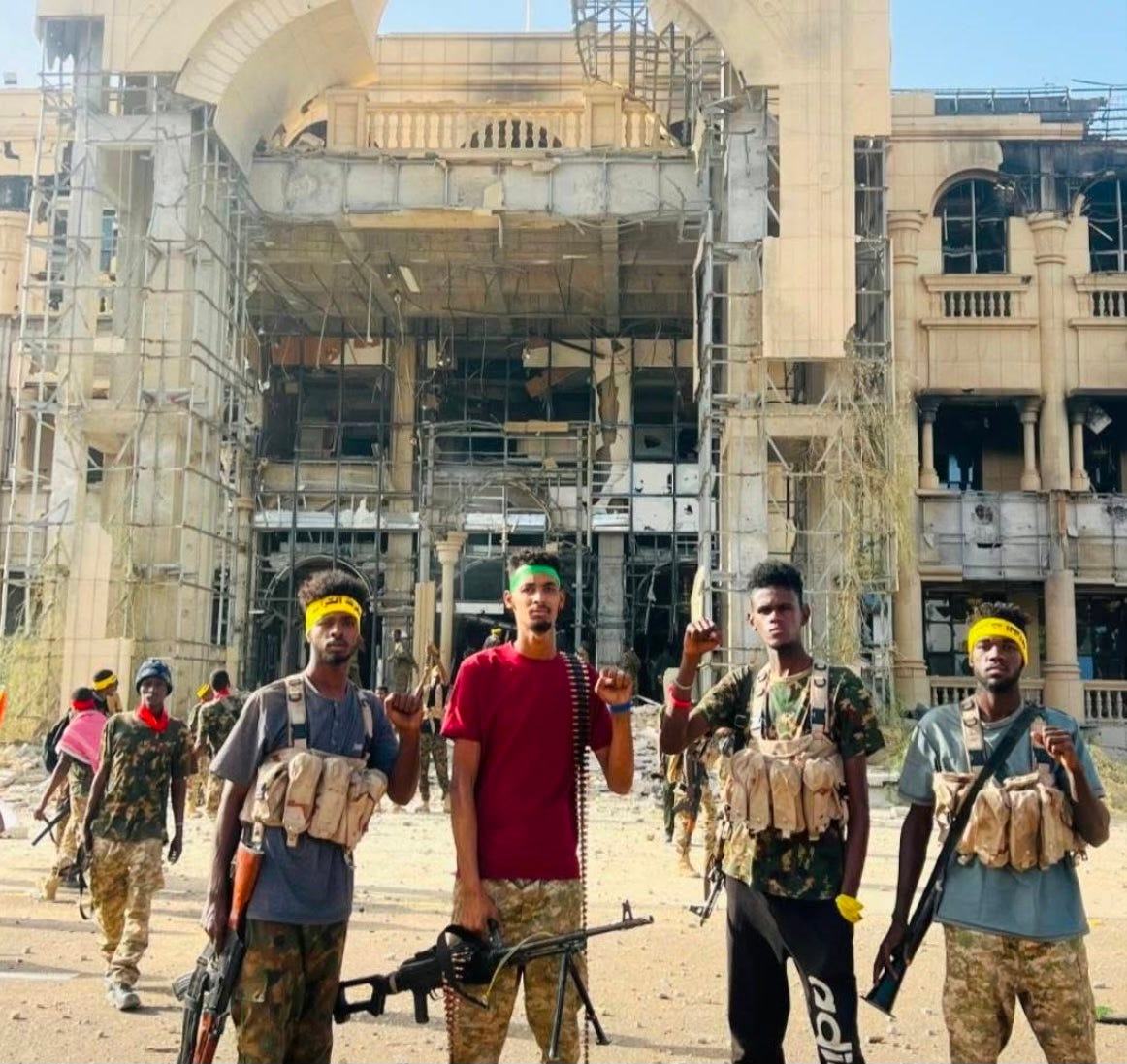
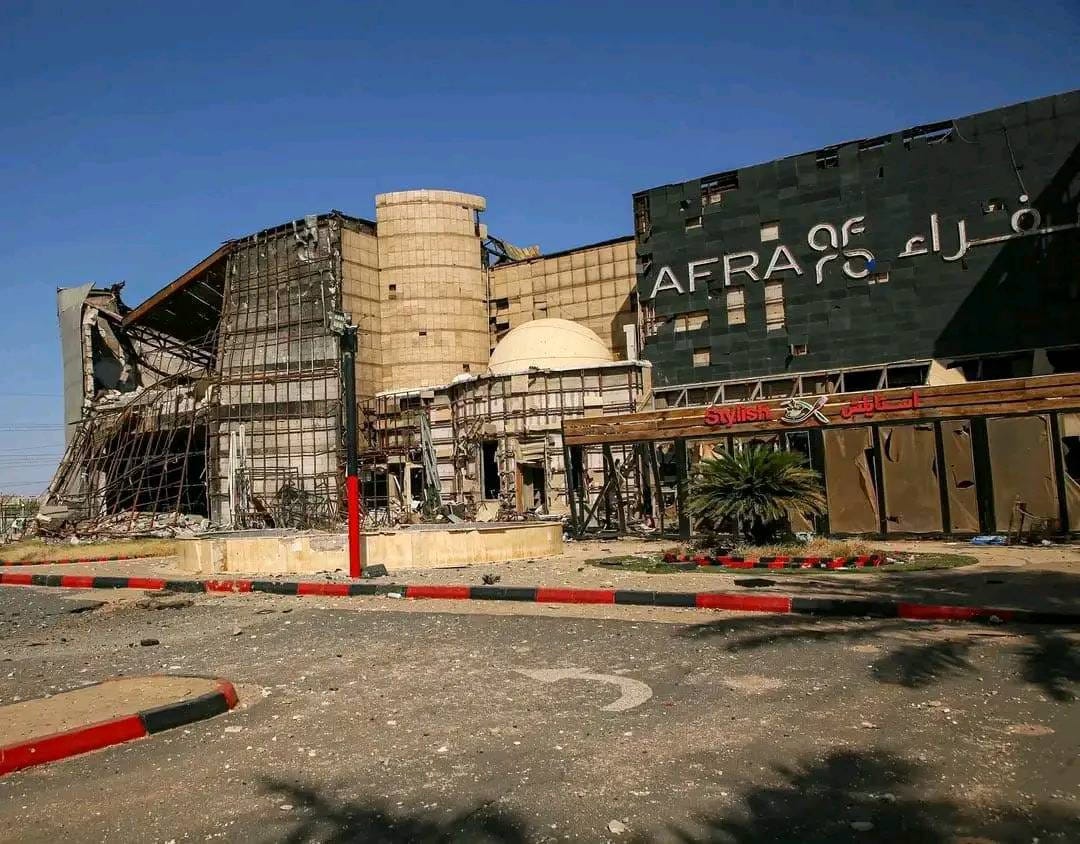
Very sad. سبحان الله.
We hope it is rebuilt better ان شاء الله
Most of these buildings were built during the era of Al Bashir, from 2000 onwards.
We hope the reconstruction is swift and people regain what they lost ان شاء الله.